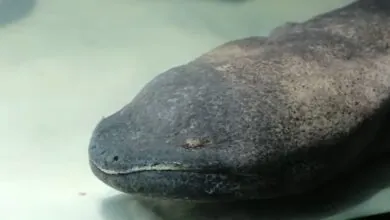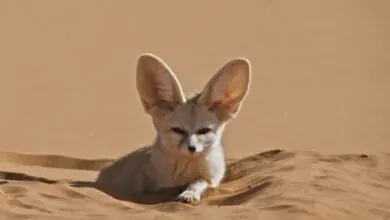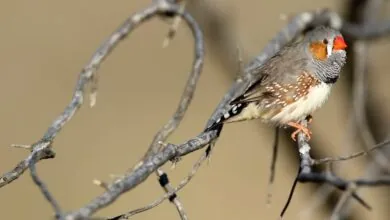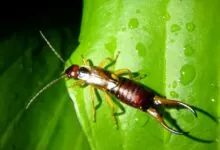Click to Leap: The Fascinating World of the Jumping Spider Pet
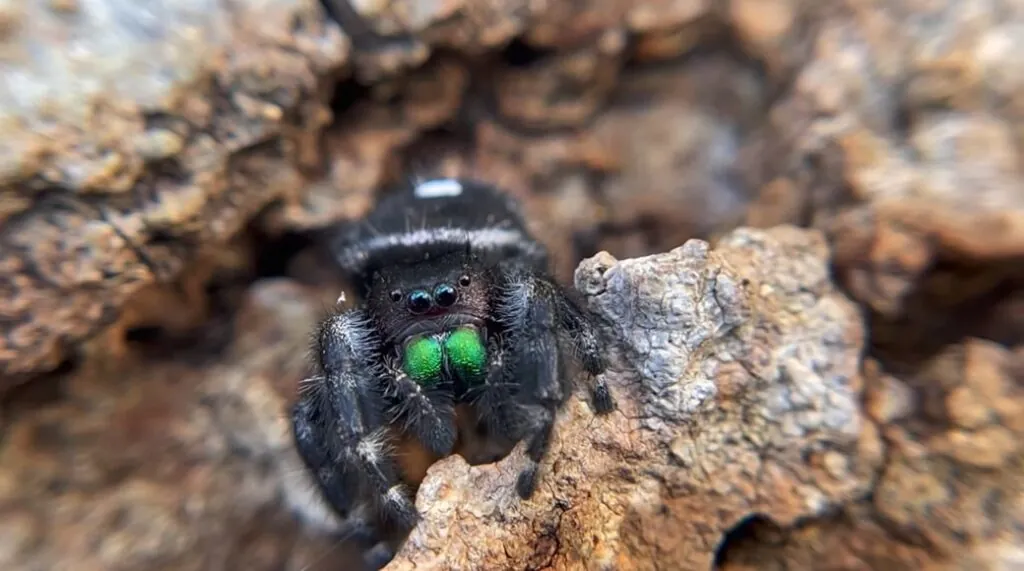
Ignore Hollywood’s eight-legged terrors! Jumping spiders, with enthralling vision and playful leaps, are anything but bloodthirsty villains. In fact, these acrobatic creatures might just leave you wondering: is it possible to have jumping spider pet? Before you grab your bug net and terrarium, let’s unfold the realm of jumping spider as a pet, revealing the thrills and challenges of welcoming these miniature marvels into your home.
| Kingdom | Phylum | Class | Order | Family | Scientific Name | |
| Animalia | Arthropoda | Arachnida | Araneae | Salticidae | Salticidae |
Origin and Evolution
These masters of the eight-eyed gaze and gravity-defying leaps, have a lineage older than most of us realize. Fossil evidence place them in the late Cretaceous period, about 100 million years back in time. They used to share the earth with dinosaurs, evolving from a spider family renowned for their agility and jumping prowess.
With the elapse of time, they honed their unparalleled skillset, developing those striking forward-facing eyes and powerful legs. In the present, with over 6,000 jumping spider species, they’re among the most diverse spider families. The redback spider, known for its distinctive red dorsal stripe and the agile jumping spider, characterized by its jumping abilities, are both members of the Arachnida class, yet they exhibit distinct behaviors and appearances.
Distribution and Population
Speaking of jumping spider distribution, from tropical rainforests brimming with life to arid deserts baking under the sun, these curious adventurers have set up camp in virtually every corner of the world, except the frigid embrace of Antarctica. Just envision: over 6,000 species thriving in forests, urban jungles, grasslands and even you backyard oasis!
With respect to jumping spider population, they’re like the grains of sand on a beach – specifically countless. As per some estimates, they’re billions out there hopping around, reminding us that once in a blue moon, the smallest thigs can have the biggest presence.
Geography
| Continent(s) | Cosmopolitan (except Antarctica) |
| Bio-geographical Realms | Nearctic, Neotropical, Palearctic, Afrotropical, Oriental, Australasian |
| Biome | Diverse, including forests, grasslands, deserts, urban areas |
| Climate Zones | Tropical, subtropical, temperate, arid |
Habitat
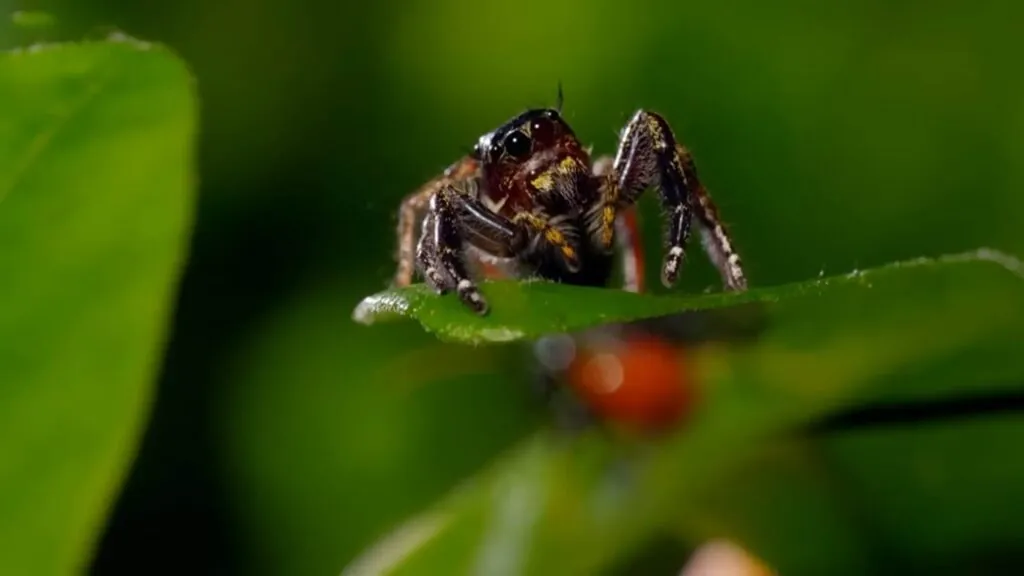
Habitat Preferences
Jumping spiders, located in stretched array of ecosystems across the globe, are amazingly adaptable generalists. Nonetheless, they do feature certain habitat preferences, including tropical forests, temperate forests, scrublands, deserts and intertidal zones. For instance, Euophrys omnisuperstes has been documented as a jumping spider pet, with enthusiasts keeping them on Mount Everest slopes at over 6,700 meters.
Habitat Utilization Patterns
Jumping spiders are active hunters having particular daily and seasonal routines. Most species are predominantly active in the course of the day, built upon their excellent vision for hunting. Specific species prioritize certain microhabitats within their broader ecosystem; for instance, the regal jumping spider prefers palm trees and palmettos in semi-arid areas, while the zebra jumper oftentimes frequents flowers and foliage.
Some species showcase seasonal shifts in microhabitat preferences. The Phidippus audax, for example, may move from low vegetation to taller shrubs as summer progresses. Let’s see which type of jumping spider pet suits you!
5 Jumping Spider Fun Facts
Appearance
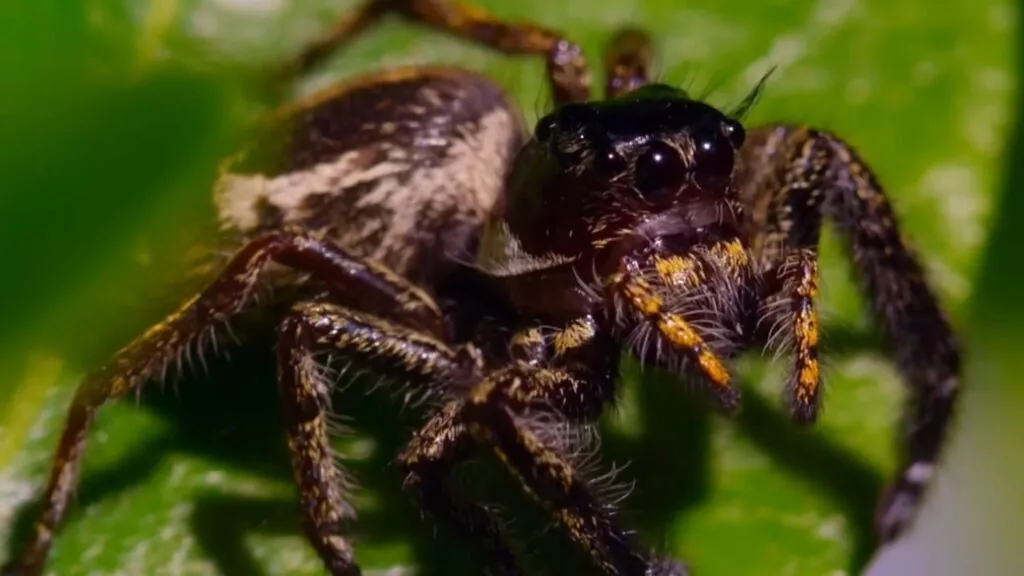
Physical Characteristics
When it comes to the jumping spider size, most species are tiny titans, seldom exceeding 18mm in body length. It boasts a velvety coat of fine hairs, making an addition to its cuddly appeal. The species come in distinct shapes, from flattened and rectangular to rounded and plump.
In terms of jumping spider color, while some rock earthy tones of black, gray and brown, other flaunt flamboyant hues like blue, red, green and yellow. In addition, what adorns its body is stripes, zigzags, spots and chevrons. There’re certain species that feature iridescent markings that shimmer and shine, like tiny disco balls in the sun.
The most distinctive feature of jumping spider is, undoubtedly, its eyes; eight in all, sequenced in three rows, with the front pair boasting remarkable size and forward-facing placement, offering it exceptional vision. While their dazzling colors and patterns might mesmerize you from afar, bear in mind that your jumping spider pet will change its appearance throughout its life.
Sexual Dimorphism
The male jumping spiders tend to be more brightly colored and sport elaborate markings and appendages, particularly on their legs, used in their flashy courtship rituals. Females, on the flip side, come in more subdued tones, generally preferring camouflage and protection for their precious eggs.
Ontogenetic Development
Juveniles, most often than not, are smaller and simpler in conjunction with jumping spider appearance compared to adults, lacking the full vibrancy and complex markings. The moment they molt and grow, they little by little acquire their adult color.
Some even experience dramatic transformations, like the bold jumping spider’s dramatic change from a drab juvenile to a flashy adult.
Anatomy
| Color(s) | Highly variable, often black, brown, gray, or with patterns (stripes, spots, chevrons) |
| Claws | Two or three claws per leg, depending on the species |
| Mouth | Located on the underside of the cephalothorax (front body section) |
| Jaw | The chelicerae serve as both jaws and fangs. They are used to bite and inject venom into prey |
| Feet | Eight legs, with seven segments each (coxa, trochanter, femur, patella, tibia, metatarsus, and tarsus) |
| Skeleton | External exoskeleton made of chitin, a hard, polysaccharide material |
Reproduction and Life Cycles
Mating System
As for as jumping spider mating system is concerned, it settles on polygamy, where males mate with multiple females but females stick to one partner. Notwithstanding, some species opt for polyandry, with females mating with several males for increase genetic diversity.
Reproductive Biology
Speaking of the jumping spider breading season, spring and summer seasons are the peak times for love in temperate regions, while tropical climates see year-round breeding with several clutches per female. Males go all out, from dazzling dances with vibrant colors and rhythmic leg vibrations to gift-giving of tasty snacks, to impress potential mates.
Gestation Period
Forget stork deliveries – your jumping spider pet will not need any feathered friends. The jumping spider gestation period differs greatly built upon the species and environmental factors like temperature. It can range from a few 2 to 4 weeks with relatively warmer temperatures.
Life Cycle Stages
Mating Habits
| Mating Behavior | Courtship rituals featuring vibrant dances, waving appendages, and display of bright colors. |
| Reproduction Season | Varies depending on species and location, but generally in spring and summer |
| Litter Size | Up to 300 eggs |
| Gestation Period | 2-4 weeks on average |
| Baby Carrying | Females guard their egg sacs by attaching them to their abdomen with silk webbing. |
| Independent Age | Spiderlings hatch after several weeks and are independent from birth. |
| Baby Name | Spiderlings or hatchlings |
Diet and Lifestyle
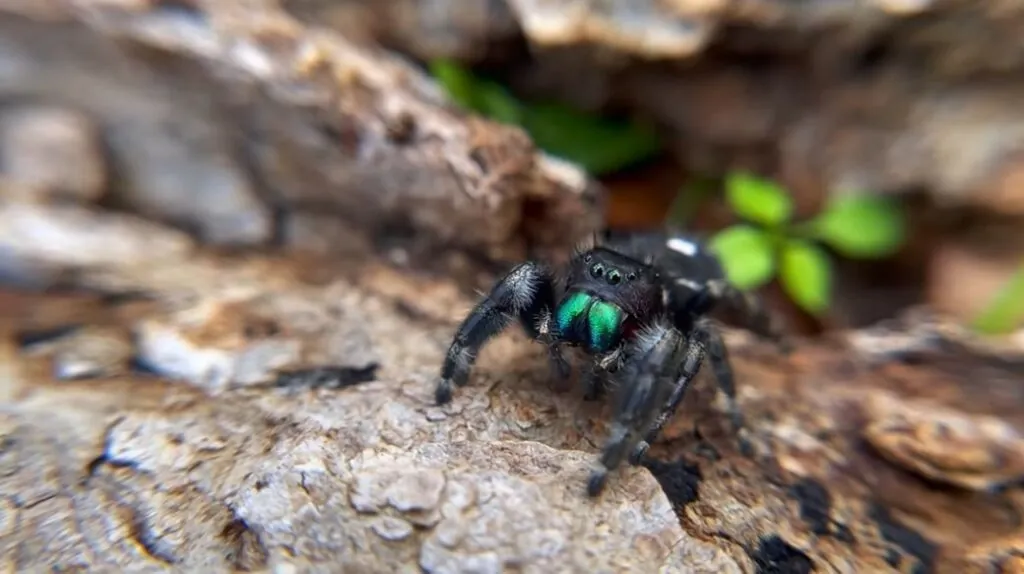
Feeding Ecology
In conjunction with jumping spider diet, they’re opportunistic hunters; their keen vision scan for any fluttering victim that dare to cross their path. It’s jumping spider eyesight that let them employ an arsenal of hunting tactics to fill their tiny bellies with everything from silken webs spun for unsuspicious prey to daring leaps.
Foraging Strategies
The creatures are expert ambush predators, stalking their prey with meticulous stealth before launching themselves in gravity-defying pounces. Yet they’re not above a bit of technique, either. Occasionally, they weave complex weebs near potential meal sources.
Diurnal Activity Patterns
They’re creatures of the day, thriving under the warm embrace of the sun. Jumping spider eyes, tuned for daytime clarity, make them daytime predators – most active when their prey is fitting and buzzing about.
Social Structure
Jumping spider pet is a loner, complacent in its solitary life. Though some species might share silken shelters for shelter, they’re not constructing eight-legged communes. For insights about the fascinating Jumping Spider, its behavior, and unique characteristics on the Smithsonian’s National Museum of Natural History.
Jumping Spider Pet
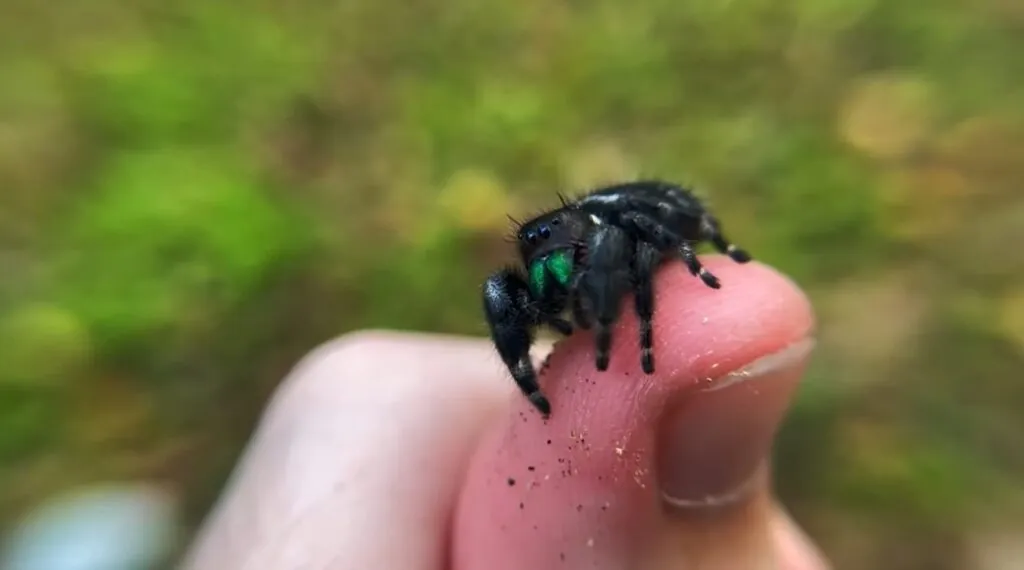
Thinking of welcoming a jumping spider pet in your life? These pint-sized adventurers with their mesmerizing eight-eyed gaze provide an unparalleled pet experience. Bear in mind that owning a jumping spider pet isn’t quite like welcoming a furry friend.
Jumping Spider Bite
Though your jumping spider pet oftentimes sparks curiosity with its enthralling vision and playful leaps, its eight-legged appearance can also trigger fear, particularly its bite. Before we dive into first aid, let’s unfold some common jumping spider bite myths.
Myths and Realities
It’s thought that these creatures are aggressive and prone to biting humans. Actually, these arachnids are quite timid and prioritize to flee than flight. Jumping spider bite is extremely rare and solely occur if your jumping spider pet feels threatened.
It’s believed that jumping spider bites are venomous and dangerous. In actual, notwithstanding the fact that these species possess venom, it’s chiefly used for subduing small prey and is not potent enough to harm human beings.
Jumping spider bite causes severe swelling and allergic reactions. Though milk swelling and redness can happen at the jumping spider bite site, it normally subsides within a few hours.
Treatment and First Aid
In conjunction with the jumping spider bite treatment, the first thing to bear in mind is that there’s no need for panic. Here’s a simple first aid routine:
Jumping Spider Vision

Concerning jumping spider eyesight, its four forward-facing eyes pack a panoramic punch, providing a near 360-degree view. Imagine 10,000 tiny lenses spotlighting light onto retinas packed with 10 times more color-detecting cells than most spiders.
It’s a no-brainer they boast a 90% success rate in their gravity-defying leaps – jumping spider vision is a high-resolution, multi angled guide, allowing them to stalk, pounce and navigate their intricate realm with an unmatched precision. Thus, it’s not only the jumping spider bite that strikes most of us but its vision astonishes as well.
Threats and Conservation
Speaking of jumping spider conservation status, they present an intricate picture thanks to their stretched number of species and diverse habitats. Nevertheless, as per IUCN, most jumping spiders are classified as “Not Extint.” Albeit their adaptability, jumping spiders encounter several hurdles, such as habitat loss, pollution peril and climate change.
Relationship with Humans
Cultural Significance and Symbolism
In terms of jumping spider cultural significance, throughout history, they’ve captured imaginations and inspired diverse interpretations; for instance, in Japan, they signify good luck and fortune. A few Native American tribes, like the Navajo, interlink the species with agility and wisdom. The spiders, from European tales of trickster spiders to African stories of spiders as guardians of the home.
The skilled Balinese artisans craft striking silver jewelry showcasing jumping spider designs. In the present, artists like Louise Bourgeois and Sarah Sze have incorporated the creatures into their sculptures and installations. The species oftentimes find their way into children’s books, like Eric Hill’s “Spot the Spider” series.
Economic Importance
As for as jumping spider economic importance is concerned, studies reveal they reduce mosquito populations by up to 90% in agricultural fields. They eagerly devour a plethora of harmful agricultural pests like flies, aphids, thrips and stink bugs.
In 2015, a study conducted in China approximated that jumping spiders contribute an average of $56 per hectare annually to rice crop protection. Those solely afraid of jumping spider bite, should think of the notion of “jumping spider pet” instead.
Unique Characteristics
Forge a path through an intriguing journey as we unfold fascinating facts about jumping spiders – truly captivating animals that start with J. Join us in shedding light on their remarkable rundown!
| Common Name | Jumping spider |
| Other Name(s) | Zebra spider, Hypodermic spider, Wall creeper, Eight-eyed weaver, Dancing spider |
| Number of Species | 6,000 |
| Population Size | Widespread and abundant globally |
| Lifespan | Typically 1-2 years |
| Weight | Between 0.001 and 0.5 grams |
| Length | Around 0.25 to 1.5 inches in body length |
| Top Speed | 1.5-2.5 mph |
| Predator | Mantises, spider wasps, mammals, birds, lizards other spiders |
| Prey | Other spiders, insects, baby lizards |
| Most Distinctive Feature | Their incredible vision |
FAQs

